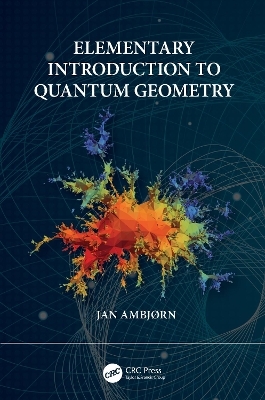
Elementary Introduction to Quantum Geometry
CRC Press (Verlag)
978-1-032-33555-1 (ISBN)
It provides an introduction to a very interdisciplinary field, uniting physics (quantum geometry) and mathematics (combinatorics) in a non-technical way, requiring no prior knowledge of quantum field theory or general relativity.
Using the path integral, the chapters provide self-contained descriptions of random walks, random trees and random surfaces as statistical systems where the free relativistic particle, the relativistic bosonic string and two-dimensional quantum gravity are obtained as scaling limits at phase transition points of these statistical systems. The geometric nature of the theories allows one to perform the path integral by counting geometries. In this way the quantization of geometry becomes closely linked to the mathematical fields of combinatorics and probability theory. By counting the geometries, it is shown that the two-dimensional quantum world is fractal at all scales unless one imposes restrictions on the geometries. It is also discussed in simple terms how quantum geometry and quantum matter can interact strongly and change the properties both of the geometries and of the matter systems.
It requires only basic undergraduate knowledge of classical mechanics, statistical mechanics and quantum mechanics, as well as some basic knowledge of mathematics at undergraduate level. It will be an ideal textbook for graduate students in theoretical and statistical physics and mathematics studying quantum gravity and quantum geometry.
Key features:
Presents the first elementary introduction to quantum geometry
Explores how to understand quantum geometry without prior knowledge beyond bachelor level physics and mathematics.
Contains exercises, problems and solutions to supplement and enhance learning
Jan Ambjørn is a Danish physicist regarded as one of the founders of the statistical theory of geometries. The formalism has been applied to bosonic strings and to quantum gravity in two and higher dimensions, and it was developed as a tool to study string theory and quantum gravity non-perturbatively. A later development, especially designed to study quantum gravity, is known as Causal Dynamical Triangulation Theory. During his career Ambjørn has done research in numerous other areas, including quantum field theory and QCD, lattice gauge theories, the baryon asymmetry of the universe, matrix models, non-commutative field theory, string theory as well as the statistical theories of random paths and random surfaces. He is currently professor at the Niels Bohr Institute, Copenhagen and Radboud University, Nijmegen.
1. Preliminary Material Part 1: the Path Integral. 2. The Free Relativistic particle. 3. One-Dimensional Quantum Gravity. 4. Branched Polymers. 5. Random Surfaces and Bosonic Strings. 6. Two-Dimensional Quantum Gravity. 7. The Fractal Structure of 2D Gravity. 8. The Causal Dynamical Triangulation model. Appendix A: Preliminary Material Part 2: Green Functions. Appendix B: Problem Sets 1-12. Appendix C: Solutions to Problem Sets 1-13.
| Erscheinungsdatum | 14.10.2022 |
|---|---|
| Zusatzinfo | 71 Line drawings, black and white; 71 Illustrations, black and white |
| Verlagsort | London |
| Sprache | englisch |
| Maße | 156 x 234 mm |
| Gewicht | 640 g |
| Themenwelt | Mathematik / Informatik ► Mathematik ► Angewandte Mathematik |
| Mathematik / Informatik ► Mathematik ► Geometrie / Topologie | |
| Naturwissenschaften ► Biologie | |
| Naturwissenschaften ► Physik / Astronomie ► Quantenphysik | |
| ISBN-10 | 1-032-33555-6 / 1032335556 |
| ISBN-13 | 978-1-032-33555-1 / 9781032335551 |
| Zustand | Neuware |
| Informationen gemäß Produktsicherheitsverordnung (GPSR) | |
| Haben Sie eine Frage zum Produkt? |
aus dem Bereich


